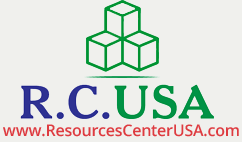- Details
- Category: Reviews Reviews
- Hits: 5704 5704
© 2007 Resources Center
Sometimes I start to think that technology can not keep improving so fast like it has in the past. When you look at the things we have and can do today that we couldn't do a few years ago, it is mind boggling. We talked about the advancement in golf clubs recently. Or the way cell phones have changed. Technology just seems to continually change faster and faster.
You want to talk about change. Microsoft has been working on a new project. It is called the Milan project. It was kept on the DL for sometime but it is out in the open now. It could just change the way we know and think about personal computing. We have gotten used to the two attachments to all desktop computers, the key board and the mouse. I remember the first wireless mouse and key board I saw. Remember that. I think it was only a few years ago that I first typed out an email from a wireless mouse. Well, the project Milan has taken this to a whole new level. The product is called the Microsoft Surface. Say good bye to the mouse and key board. There is no need for those things from the past.
The Microsoft Surface really looks more like a table than a computer. Actually remember the old Pacman game that you could sit down and play while you were waiting for your Pizza (that's when I always played it), that is what it reminds me of.
This is called "Surface Computing." And it seems it may be the way we use computers in the future. This is just the first but these type of devices could be every where in future.
How does it work? Here's a little more about the product and it's history:
The name Surface comes from "surface computing," and Microsoft envisions the coffee-table machine as the first of many such devices. Surface computing uses a blend of wireless protocols, special machine-readable tags and shape recognition to seamlessly merge the real and the virtual world — an idea the Milan team refers to as "blended reality." The table can be built with a variety of wireless transceivers, including Bluetooth, Wi-Fi and (eventually) radio frequency identification (RFID) and is designed to sync instantly with any device that touches its surface.
One of the key components of surface computing is a "multitouch" screen. It is an idea that has been floating around the research community since the 1980s and is swiftly becoming a hip new product interface — Apple's new iPhone has multitouch scrolling and picture manipulation. Multitouch devices accept input from multiple fingers and multiple users simultaneously, allowing for complex gestures, including grabbing, stretching, swiveling and sliding virtual objects across the table. And the Surface has the added advantage of a horizontal screen, so several people can gather around and use it together. Its interface is the exact opposite of the personal computer: cooperative, hands-on, and designed for public spaces.
If it seems as though the Surface machine sprang up out of nowhere, that's only because Microsoft has been unusually secretive about it. Early designs of the table were displayed around the room as evidence of the product's long development cycle; rejected shapes included "squashed white egg" and "podium." Steven Bathiche, research manager for the project, has been involved since the beginning (in 2001) when he and fellow researcher Andy Wilson first dreamed up the idea of a tabletop computer. Bathiche spoke about the Milan project's evolution with the evident excitement of a man who's had to keep the most important thing he's ever done a secret for six years. "We've gone through several generations of this machine," he said. "The first was a proof-of-concept called T1, and we just hacked it into an IKEA table."
Our Reviews on the Microsoft Surface:
I'll give this exciting new product a 7 out of 10. Of course, I haven't actually used this product yet but I think this product could help us see how we will be using computers in the future. It will be an adjustment at first I'm sure to learn to use a product like this but the more we use it, the harder it will be to keep using the old mouse and keyboard. The only negative I see is the price. Let's face it, it won't be cheap. It is the first computer like this to hit the market. So it will be too pricy for the average person. But as with all technology it will only get better and cheaper as time goes on.
